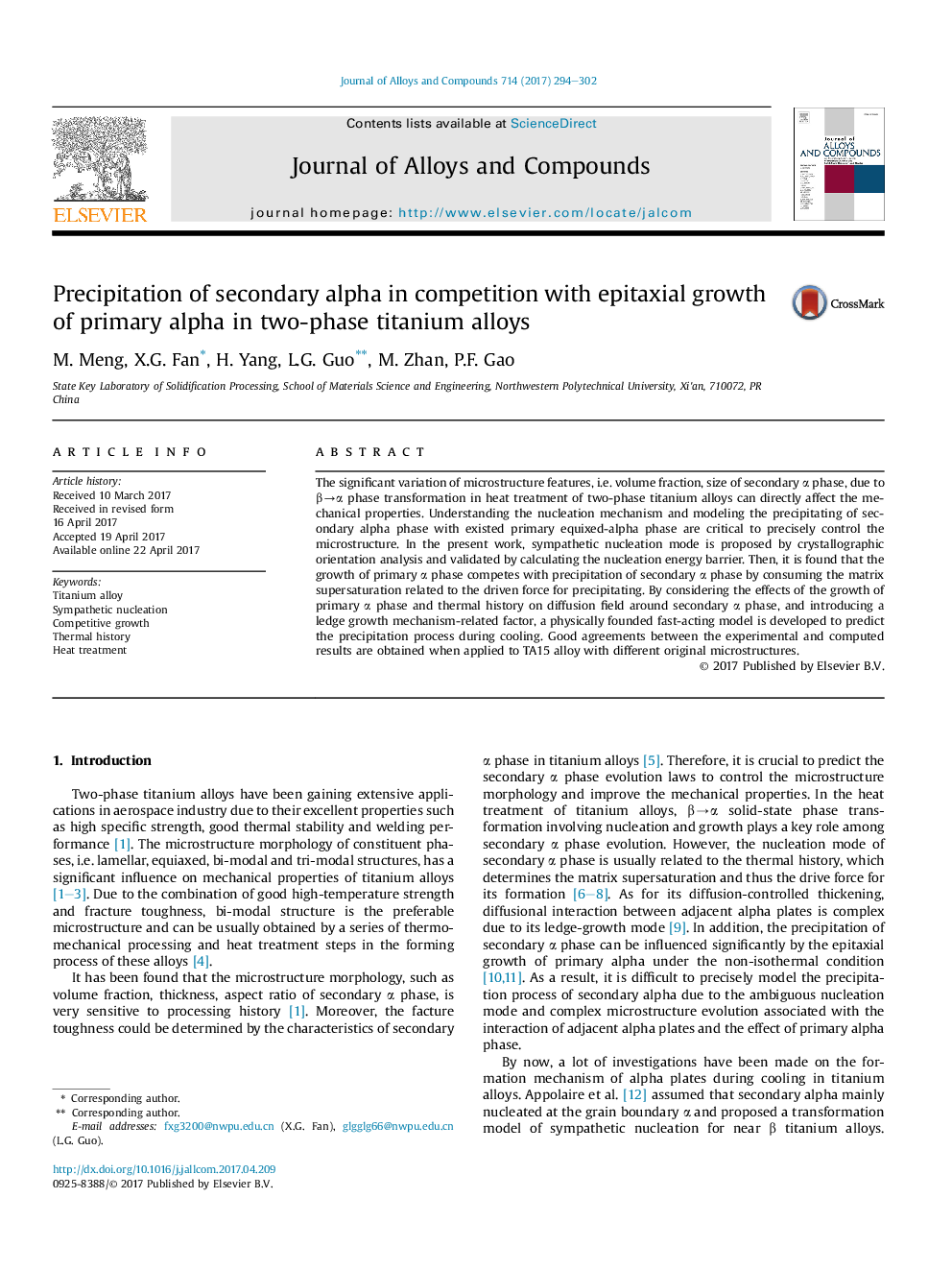| Article ID | Journal | Published Year | Pages | File Type |
|---|---|---|---|---|
| 5459102 | Journal of Alloys and Compounds | 2017 | 9 Pages |
Abstract
The significant variation of microstructure features, i.e. volume fraction, size of secondary α phase, due to βâα phase transformation in heat treatment of two-phase titanium alloys can directly affect the mechanical properties. Understanding the nucleation mechanism and modeling the precipitating of secondary alpha phase with existed primary equixed-alpha phase are critical to precisely control the microstructure. In the present work, sympathetic nucleation mode is proposed by crystallographic orientation analysis and validated by calculating the nucleation energy barrier. Then, it is found that the growth of primary α phase competes with precipitation of secondary α phase by consuming the matrix supersaturation related to the driven force for precipitating. By considering the effects of the growth of primary α phase and thermal history on diffusion field around secondary α phase, and introducing a ledge growth mechanism-related factor, a physically founded fast-acting model is developed to predict the precipitation process during cooling. Good agreements between the experimental and computed results are obtained when applied to TA15 alloy with different original microstructures.
Related Topics
Physical Sciences and Engineering
Materials Science
Metals and Alloys
Authors
M. Meng, X.G. Fan, H. Yang, L.G. Guo, M. Zhan, P.F. Gao,
